Mammoth expert reveals location of 500,000 tusks worth millions of dollars dumped in East River
>
A bone fever could be underway in New York City’s East River after a Wooly mammoth expert revealed the spot where 500,000 tusks were reportedly dumped.
Speaking on the Joe Rogan podcast, gold miner turned bone mogul John Reeves said he wanted to start a ‘bone rush’ and mapped out the location of 50 tons of mammoth tusks that could be at the bottom of the East River.
Reeves read a draft report from the mining district of Fairbanks, Alaska, detailing the transport of 500,000 tusks from Fairbanks to the American Museum of Natural History in New York City in 1940.
Reeves, who owns thousands of acres of mining land in the area, obtained the report and spoke to its lead author, Richard Osborne of the University of Alaska, who said the museum “ran out of storage” and dumped the bones.
The report revealed the location of the dump at East River Drive and 65th Street.
Woolly mammoth tusks can fetch around $20,000 each, depending on their condition, putting the potential value at the bottom of the river at around $1 billion.
“If any of you want to go out and find some bones, I’ll tell you exactly where the hell they are,” Reeves said as he explained the location. They are seekers, guardians.
Some boners, the term used for people looking for valuable bones, have already responded to the call, sharing videos of their trips to the East River.

Alaskan gold miner turned mammoth expert John Reeves has revealed the location of 500,000 tusk bones allegedly dumped in the middle of New York City’s East River.


Reeves said the tusks were “mistakenly” dumped along East River Drive near 65th Street.
Citing the draft report, Reeves said gold miners shipped 500,000 tusks to New York because the owners saw “no value.”
“You have to remember that this was between 1928 and 1958,” Reeves told Rogan. “The people, you know, the miners, they didn’t collect the bones.”
According to the report on the tusks, “mistakes” were made about the “acceptable condition” of the bones shipped to New York.
“They took a whole load of these bones on a wagon, ran out of storage and dumped them in the East River,” Reeves said.
The tusks were eventually dumped in the river at the former New York City Hospital landfill.
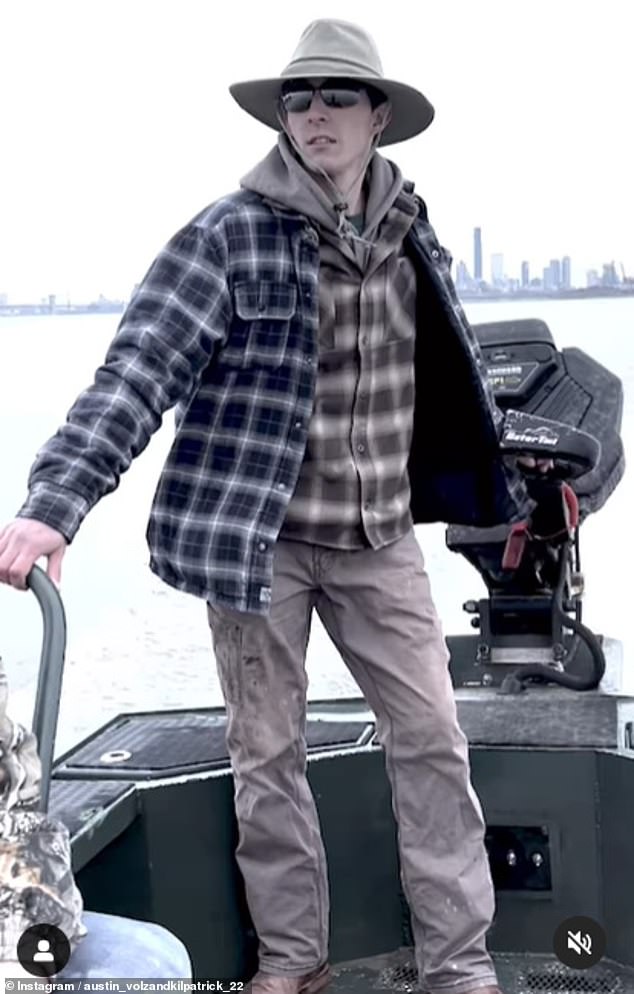

The revelation has sparked a scramble for the bones, with fortune seekers already in the river looking for the tusks, which could fetch $20,000 a piece.


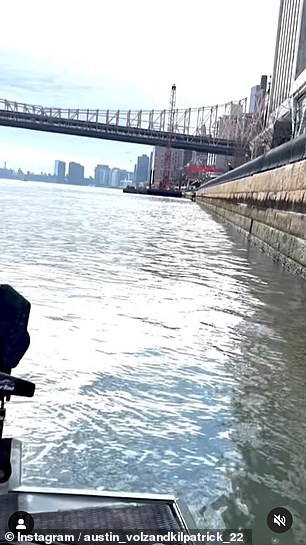

In total, the tusks, which were allegedly dumped in 1940, are worth up to $1 billion.
Although Reeves said the exact method and location of the weir was unknown, he noted that the mammoth tusks were dense and would not float away, suggesting they could still be somewhere at the bottom of the river.
Reeves mused: ‘If I was listening to your podcast, and I happen to have a boat, and I happen to have a little scuba gear?’
Rogan was also enamored with the prospect of a successful bone career that Reeves was proposing.
“Do you know how crazy it would be if there were mammoth bones in the East River?” Rogan said.
“Dude, let me tell you something about mammoth bones, mammoth tusks, they are extremely valuable,” Reeves replied.
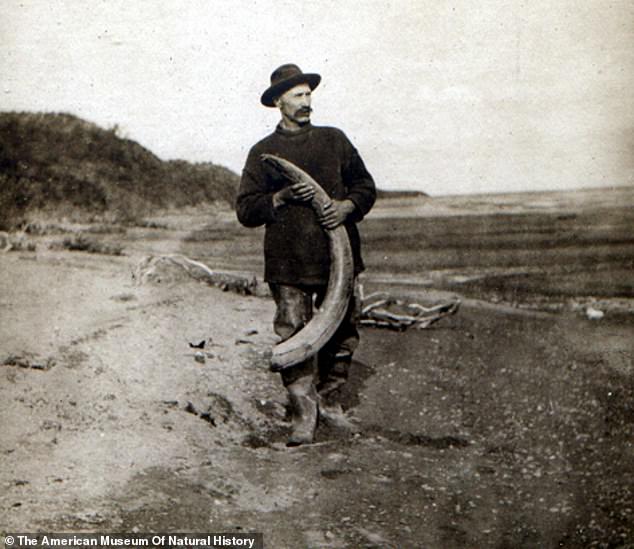

Alaskan miners who saw no value in the tusks reportedly sent them to the American Museum of Natural History in New York City. Pictured: tusks found in 1907 on an Alaskan expedition
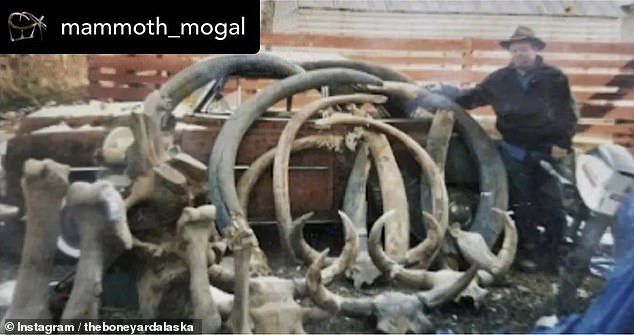

Reeves (right) said he wanted to start a bone race. Gold miner has found thousands of preserved bones on his land
Reeves, a self-made millionaire, knows something about the value of tusks after discovering perfectly preserved mammoth bones while mining for gold in Alaska.
Reeves, owner of Fairbanks Gold, LLC, owns thousands of acres of mining land along the state’s rivers.
in a interview With academic researchers, Reeves described himself as a champion swimmer who went to college in Florida before dropping out and deciding to join the gold prospectors in Alaska.
In the 1980s, Reeves purchased a gold dredging site outside of Fairbanks, which was transformed into a tourist site where visitors could pan for gold along the river. The site has since been sold to Holland America.
Reeves went on to expand his interest in mining land in Fairbanks, also buying state and federal land.
In a 2012 National Geographic documentary about Ice Age fossil collectors in Alaska, Reeves boasted of finding thousands of specimens on his land.
While his fellow miners joked that panning for gold is more lucrative, Reeves said he has become a passionate collector of ancient bones.
“Mammoth tusks are more fun to look at,” he had said. I like them better than wads of $100 bills.
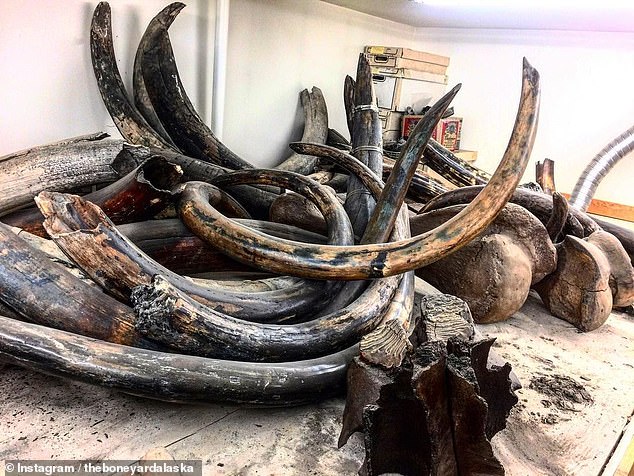

Since finding mammoth bones decades ago, Reeves has created a collection called Boneyard Alaska that houses his rare specimens.


Pictured: Woolly mammoth tusks found on Reeves land
The ‘alaska cemeteryThe documentary, which followed Reeves’ search for bones earlier this year, echoed his passion for searching for ancient bones.
“I was always captivated to find something in the ground or in the dirt that told me a little bit about our culture and where we came from and what was here before us,” Reeves said in the film. ‘Those cool things we found need to be saved.’
In the documentary, Reeves’ excavations could be seen unearthing 100 bones in a single day, and researchers touted that Reeves could recreate an entire herd of mammoths with his collection.
Reeves’ collection is remarkably impressive because Alaska’s permafrost keeps the specimens perfectly preserved.
